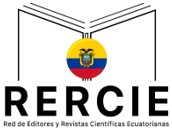The Basilica of the National Vow: Expansion and Restoration Strategies of the Globalized Catholic Church. Quito: 1870-1930’s.”
DOI:
https://doi.org/10.5281/zenodo.10892198Keywords:
Basílica del Voto Nacional del Ecuador, geografía de la religión, Julio María Matovelle, revival católico, neogóticoAbstract
This essay goes beyond traditional historiography centered mainly in the stylistic problematic, and it pretends to lay down the political and religious strategies in which the Ecuadorian Catholic Church -despite the crisis- intervened symbolically and materially in the setting of the modern city, between 1870 and the 1930´s, particularly in Quito. In order to illustrate this complex process, I center my proposal starting with the concordat established between the Ecuadorian Estate and the Holy Seat, and the detonating presence and action of the reformed European religious congregations, and others originated in our country, related to the re-semantized worship the Sacred Heart of Jesus. The most visible materialization of this phenomenon is the construction of the monumental Neogothic Basílica del Voto Nacional and its surrounding buildings, quarters, gardens and plazas, in Quito, which was intended to seal the political peace and become a spiritual guide (faro or lighthouse) at 3 scales: from Quito to its own inhabitants, from Quito to the rest of Ecuador, from Ecuador to Europe, within its strategies of expansion of the French “Restoration” and Catholic Revival.
Downloads
Published
Versions
- 2024-05-22 (2)
- 2024-03-31 (1)
How to Cite
Issue
Section
License
Copyright (c) 2024 Alexandra Kennedy Troya

This work is licensed under a Creative Commons Attribution-NonCommercial-ShareAlike 4.0 International License.
INPC, Revista del Patrimonio Cultural del Ecuador provee acceso libre a su contenido digital para lectura y descarga, con el propósito de democratizar el conocimiento y la difusión de la investigación. Se permite el acceso y empleo del material siempre y cuando se reconozca a los autores/as, no se lo use comercialmente y se lo comparta con un criterio similar.
Los autores/as conservarán sus derechos de autor; podrán difundir sus artículos en otras obras impresas o digitales, sitios personales o institucionales, dando crédito a su publicación original en esta revista, reconociendo así su trabajo editorial y potenciando su alcance.








